- Animal Testing
- Beef
- Chicken
- Circuses
- Dairy
- Dissection
- Donkeys
- Down
- Eggs
- Foie Gras
- Fur
- Honey
- Hunting
- Lobster
- Pork
- Seal Hunt
- Turkey
- Wool
- Zoos
Wool

Most people don't understand why vegans avoid wool products. The wool industry however, doesn't only exploit sheep, it's also very cruel to them.
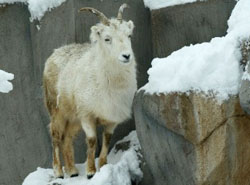
Do Sheep Need To Be Shorn?
Are sheep really these weird creatures who grow so much wool in the winter that they need help from humans?
Natural sheep, like the wild Dall Sheep pictured on the right, don't need any help. They grown just enough wool to protect themselves from the cold in the winter and to keep cool in the summer. When it is time, they will shed their winter coat all by themselves.
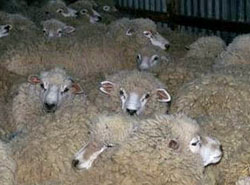
Domesticated Sheep
People have selectively bred our modern sheep with the thick heavy coats. About 30% of all wool used worldwide comes from Australia, where the most commonly raised sheep is the Merino. Merinos have been bred to have wrinkly skin to produce more wool. Their coats are so thick that some die of heat exhaustion during hot months. Unlike wild sheep, Merinos cannot shed their fleece.
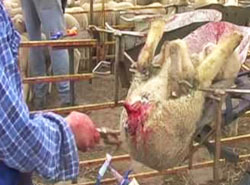
Mulesing
When domesticated sheep can not shed their fleece themselves, their wool will grow longer and longer while flies lay eggs in the moist folds of their skin. The hatched maggots can eat the sheep alive.
To prevent this from happening, ranchers will perform an operation called mulesing. Without anesthesia large strips of flesh are cut of the backs of lambs and around their tails.
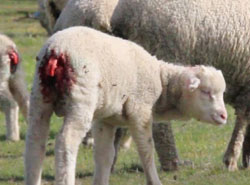
Other procedures performed without anesthesia include punching a hole in the ears of lambs several weeks after birth, docking their tails and castrating the males. The castrations are done when the male lambs are between 2 and 8 weeks old, with the use of a rubber ring to cut off their blood supply.
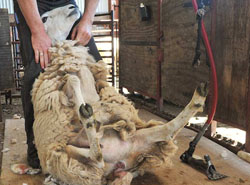
Shearing
Sheep are sheared in the spring, just before they would naturally shed their winter coats. Because shearing too late would mean a loss of wool, most sheep are sheared while it is still too cold. An estimated one million sheep die every year of exposure after premature shearing.
Another problem with sheep shearing is that the shearers are not paid by the hour, but by volume. They handle the animals very roughly and a lot of sheep get injured.

Holding Pens
When the wool production of sheep declines, they are sold for slaughter. Millions of lambs and sheep are exported for slaughter each year. In Australia they have to travel long distances before reaching very crowded feedlots, where they are held before being loaded onto ships. Many sheep die in the holding pens.
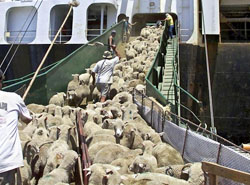
Transportation
The sheep who survive the holding pens are packed tightly into ships. Lambs born during the trip are often trampled to death. A lot of sheep get injured or die.
In Europe they have to travel long distances in tightly packed trucks without food or water.
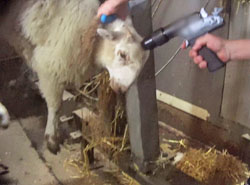
The Slaughterhouse
Sheep are frequently exported to countries with minimal slaughter regulations and where the sheep are often conscious while being dismembered.

